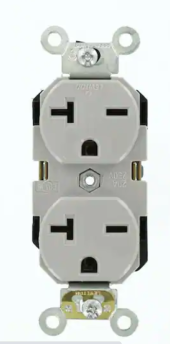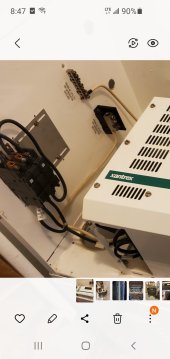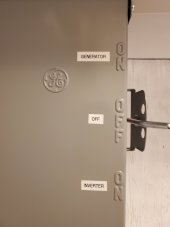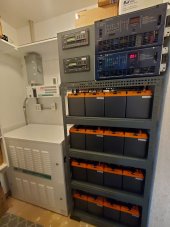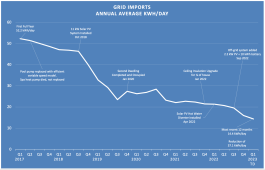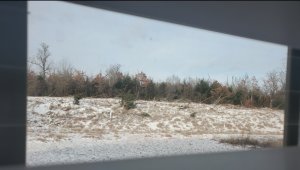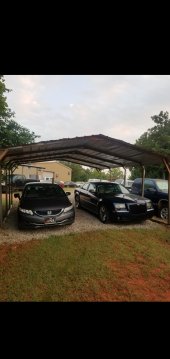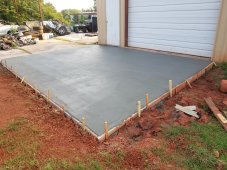G.W. Mad Scientist
New Member
I built this power system over 2 years ago from lots of leftover stuff I had laying around decided to get creative I had been using a 2,000 w modified sine wave freedom inverter but it smoked my smoke detectors of all the crazy things and my pilotless ignition on the stove did not like it either so I decided to go pure sine wave instead of a high end modified sine wave I was able to pick up a 12v 3000w Sata Dimensions utility type sine wave inverter off eBay for $300 it has a extremely high surge capability can start a 1 1/2 hp motor I tied that together with a trace 220 Step up Transformer to run my well used a stat power/trace type battery bank charger even added a boost capacitor to help the starting capability. Use 10 car batteries an old shelf I had in the garage even added in Anderson connectors and made me a set of extension cables with clamps that I could throw out the office window and run it off my CNG truck I actually powered the house one time for over 3 weeks when the grid went down in an ice storm the system worked incredibly well and it's been an excellent backup system for me, everything included I only have about $1,000 in it I added a 240 outlet and made myself an emergency suitcase cable box with all the necessary cables to backfeed to my breaker box and a direct cable to plug my well in which was originally hardwired I created a plug-in outlet for it that allowed me to plug my pressure tank control into this system, has worked pretty darn good for the cost sorry for the lack of punctuation it's late I'm tired I'm talk texting this postthought I would throw something on to get started on the Forum I didn't really know a lot about these Sata Dimension inverters until I got this one and it turned out to be a very Stout little inverter this is made for utility trucks and made to Run induction Motors. At one point I was going to wire it through the house to the breaker box ended up not doing it decided to save my cables for something else Although it doesn't have solar going to it ? it's an excellent backup power system soon to be replaced by one tenfold in size ??
Attachments
-
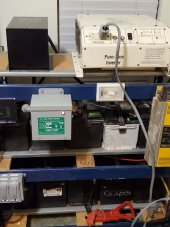 20221011_211107.jpg147.1 KB · Views: 31
20221011_211107.jpg147.1 KB · Views: 31 -
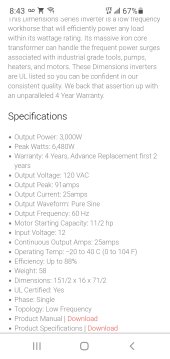 Screenshot_20230227-204338_Chrome.jpg186.7 KB · Views: 32
Screenshot_20230227-204338_Chrome.jpg186.7 KB · Views: 32 -
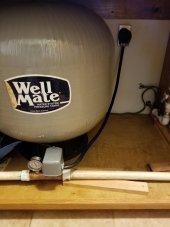 20210529_184950.jpg101 KB · Views: 31
20210529_184950.jpg101 KB · Views: 31 -
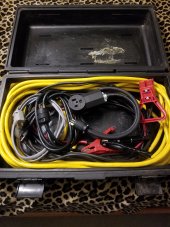 20210615_224922.jpg186.5 KB · Views: 28
20210615_224922.jpg186.5 KB · Views: 28 -
 20210619_232820.jpg95.5 KB · Views: 133
20210619_232820.jpg95.5 KB · Views: 133 -
 20210619_235206.jpg116.5 KB · Views: 27
20210619_235206.jpg116.5 KB · Views: 27 -
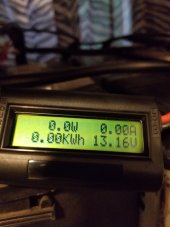 20210525_070707.jpg111.3 KB · Views: 27
20210525_070707.jpg111.3 KB · Views: 27 -
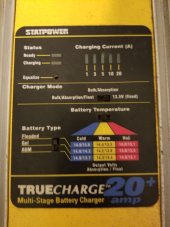 20210525_070627.jpg112.4 KB · Views: 27
20210525_070627.jpg112.4 KB · Views: 27 -
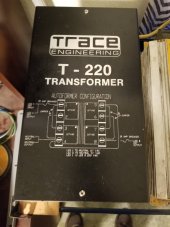 20210525_070616.jpg124.1 KB · Views: 24
20210525_070616.jpg124.1 KB · Views: 24 -
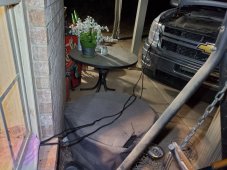 20221011_205556.jpg253.7 KB · Views: 33
20221011_205556.jpg253.7 KB · Views: 33



